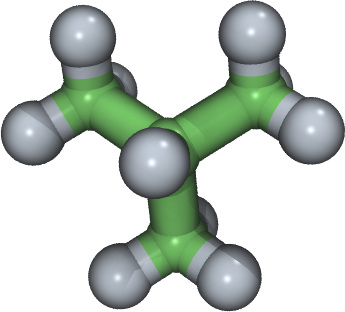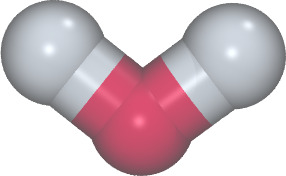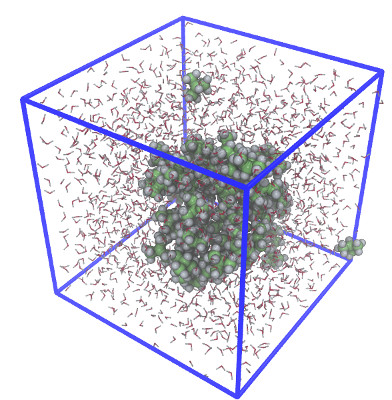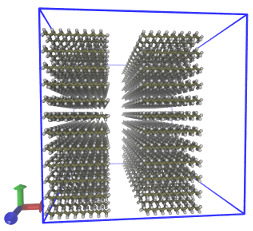Dear all
could you introduce some websites that i can download force field of light molecules?
such as methane ethane propane,…
i need bond_coeff, angle_coeff and dihedral_coeff
Thanks all
Dear all
could you introduce some websites that i can download force field of light molecules?
such as methane ethane propane,…
i need bond_coeff, angle_coeff and dihedral_coeff
Thanks all
Look for publications of simulations of these things, and see what force fields were used there.
For united atom models see:
http://www.chem.umn.edu/groups/siepmann/trappe/intro.php
For many more already tabulated into Towhee:
http://towhee.sourceforge.net/towhee_capabilities.html
Buyers beware when it comes to using them without studying their capabilities/range of action.
Carlos
As noted, you should check the literature to see what force-fields use
for the molecules you are simulating.
That said, the AMBER GAFF force field used to be a popular choice for
simulating small organic molecules.
(Although there are newer force-fields available by now.)
In case it is useful, I converted "gaff.dat" into moltemplate format
("gaff.lt"). This means moltemplate can automatically look up all of
the force-field parameters for your system according to atom-type.
Moltemplate will create angles, dihedrals, and impropers topology
automatically, and choose the correct force-field parameters for these
bonded interactions. (You must figure out the nomenclature GAFF uses
to describe the atoms in your molecule.)
---- quick tutorial ----
There are two examples (currently distributed with moltemplate) in the
"examples/all_atom_examples/AMBER_force_field_examples/" subdirectory.
They are:
waterTIP3P+isobutane/
hexadecane/
step 1)
Go to the "moltemplate_files" subdirectory.
You can build the system using:
moltemplate.sh system.lt
That will create 3 files:
system.in.init system.in.settings system.data
step 2)
If any of the atoms in your system have non-zero charge, then
afterwards, you should probably change the pair-style to
lj/charmm/coul/long.
To do that you can use the following 2 commands:
echo "pair_style hybrid lj/charmm/coul/long 9.0 10.0" >> system.in.init
sed -i 's/lj\/charmm\/coul\/charmm/lj\/charmm\/coul\/long/g' system.in.settings
(There should be 2 different commands above, starting with "echo" and
"sed". Sometimes my email client will split those lines into multiple
lines. Nothing I can do about that. Just be careful to make these
single lines when you paste them into the shell.)
That's it. You are done.
(You can skip the "OPTIONAL STEPS" steps in the "README_setup.sh"
file. These steps do not really matter.)
step 3)
Copy those 3 files to the directory ("cp system.in.* system.data ..")
containing the input script with your run command (usually
"run.in.npt"), and run lammps using something like:
lmp_linux -i run.in.npt
--- building your own molecules using GAFF ---
Here is an example of a small molecule (or in this case, small
molecule fragment) built using moltemplate using the GAFF force field:
import "gaff.lt"
CH2 inherits GAFF {
write("Data Atoms") {
$atom:C $mol:... @atom:c3 0.0 0.0 0.0 0.0
$atom:H1 $mol:... @atom:h1 0.0 0.0 0.631 0.892
$atom:H2 $mol:... @atom:h1 0.0 0.0 0.631 -0.892
}
# Now specify which pairs of atoms are bonded:
write('Data Bond List') {
$bond:CH1 $atom:C $atom:H1
$bond:CH2 $atom:C $atom:H2
}
} # CH2
In this particular example, "CH2" is not a molecule, but a group.
(Later it is used as a building-block to build hexadecane.) Anyway,
the important point is all you have to specify are the atom types
atom-charges (in this case, zero), and a list of bonds (only 2 bonds
in this case). For the bonds, you only have to specify which atoms
are connected together. The bond-id name ($bond:CH1 and $bond:CH2)
does not matter.
Again, moltemplate will generate everything else. The difficult part
is to figure out the atom types ("@atom:c3", "@atom:h1"), and charges.
The atom types must match the atom-type names used by GAFF (in this
case "c3" and "h1").
Let me know if moltemplate does not correctly build systems using
GAFF. (It is possible that the improper angles may be generated
incorrectly.) If you find a bug, I will eventually fix it provided
you can help me interpret the source of the error (for example: was it
a dihedral problem or an improper problem)?
Cheers
Andrew



![]()
